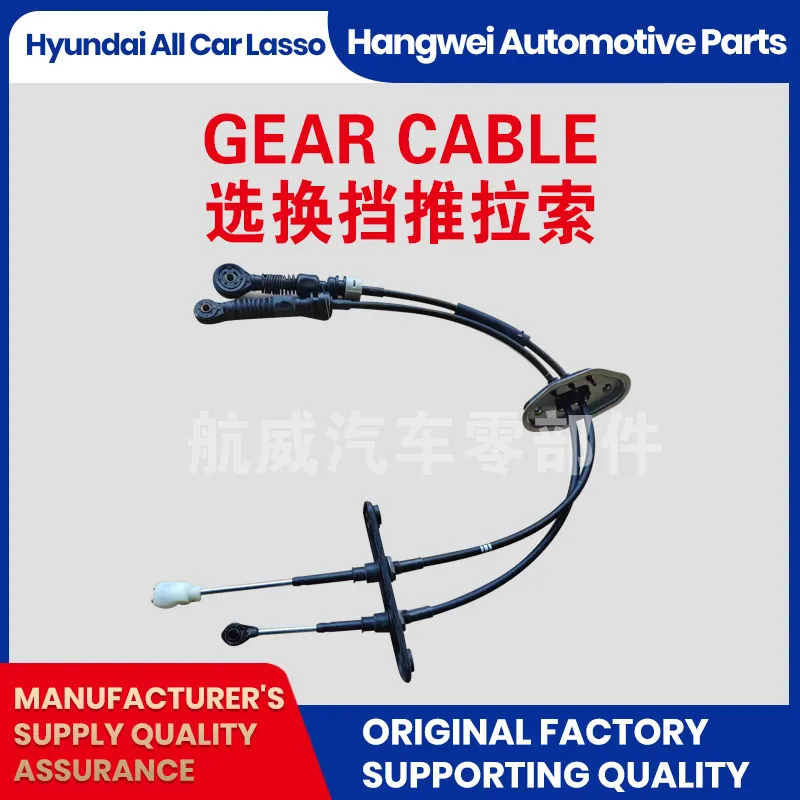Understanding Gear Cable Systems for Bicycles and Their Maintenance Needs
Understanding Gear Cables The Unsung Heroes of Cycling
When it comes to cycling, many enthusiasts focus on the frame, wheels, and gears, often overlooking a critical component that significantly influences the overall performance and reliability of the bike—the gear cables. These seemingly simple cables play a vital role in ensuring that shifting gears is smooth and efficient, and understanding their importance can enhance your cycling experience.
What Are Gear Cables?
Gear cables are thin, strong wires, usually made from stainless steel, that connect the shifters (the devices used to switch gears) to the derailleurs (the components responsible for moving the chain across the gears). When a cyclist pulls on the shifter lever, tension is sent through the cable, which in turn moves the derailleur, shifting the chain onto the desired gear. This interaction creates a seamless transition that allows the cyclist to maintain momentum and tackle various terrains effectively.
Importance of Gear Cables
1. Smooth Shifting The most significant role of gear cables is to enable smooth and accurate shifting. Friction, wear, and corrosion can cause cables to become stiff or unresponsive over time, leading to missed shifts or dropped chains. Regular maintenance and timely replacement of worn cables help ensure that shifting remains responsive.
2. Durability A high-quality gear cable is essential for reliability on the road or trail. Factors such as weather conditions, dirt, and moisture can quickly degrade lower-quality cables. Investing in durable gear cables made from corrosion-resistant materials can prolong their lifespan, reducing the frequency of replacements.
3. Weight Considerations For competitive cyclists, every ounce matters. Upgrading to lightweight gear cables can contribute to an overall reduction in the bike's weight, enhancing performance without sacrificing strength or functionality. This is particularly important in racing, where even minuscule weight differences can impact speed and efficiency.
4. Adjustment and Tuning Gear cables can stretch over time, requiring adjustments to ensure they function optimally. Fine-tuning the cable tension can significantly enhance shifting performance. Cyclists familiar with their bikes can perform these adjustments at home, using simple tools to achieve the perfect tension for smooth gear transitions.
Choosing the Right Gear Cables
When selecting gear cables, several factors should be considered
gear cables

- Material Look for cables made from high-quality stainless steel or other corrosion-resistant materials. Some cables come with coatings that reduce friction and enhance durability. - Compatibility Ensure that the gear cables are compatible with your bike's shifters and derailleurs. Different brands and models may require specific cable types.
- Weight If performance is a priority, consider lightweight options designed for racing.
- Brand Reputation Choose cables from reputable manufacturers known for producing reliable bicycle components. This ensures you're getting a product that meets high standards of quality and performance.
Maintenance Tips
To extend the life of your gear cables and ensure optimal functionality, consider these maintenance tips
1. Regular Inspections Periodically check for fraying, rust, or wear on cables. Address any issues promptly to prevent shifting problems.
2. Keep Cables Clean Dirt and grime can accumulate around the cables, leading to increased friction. Clean them regularly to maintain smooth operation.
3. Lubrication Use appropriate lubricants specifically designed for cable systems. This can help reduce friction and prevent corrosion.
4. Replace When Necessary If you notice skipping gears or difficulty shifting, it may be time to replace your gear cables. Don’t wait until the problem worsens, as this can lead to more significant issues with your bike’s overall performance.
Conclusion
Gear cables may not be the most glamorous aspect of a bicycle, but their significance cannot be overstated. Whether you are a casual rider or a competitive athlete, understanding the role of gear cables can enhance your cycling experience. These cables are instrumental in providing smooth, reliable shifts that contribute to the overall functionality of the bike. By investing in quality cables and maintaining them properly, cyclists can ensure their rides remain enjoyable and efficient for years to come. Whether you’re navigating city streets or tackling challenging trails, remember that the unsung heroes of cycling are often the simplest components beneath the surface.
-
Workings of Clutch Pipe and Hose SystemsNewsJun.04,2025
-
The Inner Workings of Hand Brake Cable SystemsNewsJun.04,2025
-
The Secrets of Throttle and Accelerator CablesNewsJun.04,2025
-
The Hidden Lifeline of Your Transmission Gear Shift CablesNewsJun.04,2025
-
Demystifying Gear Cables and Shift LinkagesNewsJun.04,2025
-
Decoding Clutch Line Systems A Comprehensive GuideNewsJun.04,2025
